Using a bidet extension cord can be a safe, code-aware fix when the outlet is just out of reach. The key is to match the cord to your bidet’s load, keep everything grounded, and plug into a GFCI outlet. In this guide, you’ll get quick answers first, then clear steps on choosing a 3‑prong, heavy‑duty cord, sizing by amps and watts, routing with neat concealment, and testing your setup. You’ll also learn when to install a new outlet, how to troubleshoot heat or trips, and how to keep things safe over time.
Quick Answers: Can you use a bidet extension cord?
Before we dive into the nitty-gritty, let’s clear the air: using an extension cord with a bidet isn’t automatically a no-go—but it comes with strict safety rules. Always check your bidet outlet requirements before you connect, so you don’t have to worry about overloads or safety hazards. Think of it like a “sometimes yes, but only if you do it right” situation. Below, we break down what works, what doesn’t, and what could trip up your warranty, so you can stay both comfortable and safe.
The 20‑second answer
-
Yes—if you use a grounded, heavy‑duty 3‑prong cord rated at least 13A and 1500W on a GFCI outlet.
-
Typical bidet seat draw: about 500–1400W; the built‑in bidet power cord is often about 4 feet long.
-
Use UL‑ or ETL‑listed cords; do not use light‑duty or 2‑prong cords.
-
Keep cords off walkways and away from splashes or standing water.
Safety non‑negotiables
-
Use a GFCI outlet only; test it before use using the TEST/RESET buttons.
-
Use a grounded 3‑prong, heavy‑duty cord. No daisy‑chaining with power strips or multiple cords.
-
Route cords along walls or baseboards, not across paths, and add a small downward “drip loop” near the plug so water can’t run into the receptacle.
When not to use an extension cord
-
If the cord would cross a walkway, pass under rugs, or be pinched by doors or cabinets.
-
If the length needed is so long that safe, tidy routing is not practical.
-
If the outlet isn’t GFCI‑protected or if the cord or plug shows any damage, discoloration, or loose blades.

Does using an extension cord void the warranty?
Check your bidet’s manual. Many electric bidet seats are designed to plug into a GFCI receptacle. Follow the stated specs (amps/watts, grounding). If a manufacturer bans power strips or surge devices, follow that. Local code still applies.
Specs That Matter: Amps, Watts, Gauge, Length
Electric bidet seats heat water and/or the seat. That’s why current can peak near 10–12 amps on 120V in North America. Your bidet extension cord must match or exceed that, and your outlet must add shock protection.
Minimum ratings and certifications
For most electric bidet seats, the same cord specs apply to maintain safety and proper operation.
-
Ratings: ≥13A, ≥1500W, 120V, grounded 3‑prong
-
Certifications: UL or ETL listed; indoor‑rated jacket (SJT or SJTW)
-
Bathroom electrical safety: use a GFCI receptacle
These specs keep heat in check and maintain a safe ground path.
Gauge vs length: voltage drop basics
Wire gauge (AWG) is about thickness. Thicker wire has lower resistance and less voltage drop.
-
As a rule of thumb: use 14 AWG for short runs and 12 AWG for longer runs or if your bidet is near the top end of wattage.
-
Quick math: Amps = Watts ÷ Volts. For example, 1400W ÷ 120V ≈ 11.7A.
-
Keep the cord as short as practical. Shorter cords run cooler and waste less power.
Essential reference for typical setups:
| Bidet load and cord plan | Suggested cord gauge |
|---|---|
| Up to ~900W, short run (≤8 ft) | 14 AWG |
| 900–1400W, moderate run (8–15 ft) | 14 AWG preferred, 12 AWG if near max load |
| 1200–1400W, longer run (15–25 ft) | 12 AWG |
| Over 25 ft | Consider adding an outlet instead of a very long cord |
These are common‑sense guidelines. When in doubt, choose the thicker gauge (smaller AWG number).
GFCI outlets and dedicated circuits
-
Bathrooms need GFCI protection under electrical code (NEC 210.8). Test monthly.
-
A 20A bathroom circuit is common and preferred. Avoid sharing that circuit with hair dryers, space heaters, or other high-draw devices at the same time.
-
A dedicated circuit is often recommended for high-end units, especially if you have frequent nuisance trips or a crowded panel.
How long can the extension cord be for a bidet?
As short as possible. If you must go longer, choose a thicker gauge (12 AWG) and route it along walls with supports. Very long cords increase voltage drop and risk. If you need over ~15–25 feet, it’s time to plan for an outlet near the toilet to keep the cord short and safe. This ensures your bidet can connect properly without stretching or creating a trip hazard.

Choosing the Right Bidet Extension Cord and Accessories
Picking the right cord and accessories might seem minor, but it’s key to keeping your bidet safe and hassle-free. From sturdy, properly rated cords to low‑profile plugs and careful use of power strips, the details matter.
Cord types and jacket ratings
Look for bidet extension cords marked SJT or SJTW. These are common indoor cords with sturdy jackets. You want a snug‑fitting 3‑prong plug and receptacle, clear grounding, and good strain relief. Avoid flat “under‑rug” cords. They are not made for this and can overheat or get damaged.
Plug orientation and low‑profile options
Low‑profile, right‑angle plugs are handy behind the toilet or vanity because space is tight. They reduce stress on the cord and help keep the look tidy and more aesthetically pleasing. If your bathroom has a child‑safe or tamper‑resistant outlet, make sure your plug seats fully.
Power strips and surge protectors: proceed with caution
Avoid power strips and daisy‑chaining. If you think you need surge protection, check your manual first. If allowed, use only a UL‑listed, GFCI‑protected unit that can handle 15A/1875W. But the simpler, safer choice is one grounded extension cord directly to a GFCI receptacle.
Is a 15‑amp extension cord OK for a bidet seat?
Yes, if it is UL/ETL‑listed and rated 15A/1875W, and your bidet’s watts and amps are within that limit. Match or exceed the bidet’s load and keep the run short.
Installation: Routing, Concealment, and Setup
Good routing is about safety, aesthetically pleasing looks, and serviceability. Whether installing a cord along baseboards or behind cabinets, the goal is to keep it secure and dry.
Plan the path: measure, map, minimize exposure
Measure from the bidet’s power cord (usually ~4 ft) to your GFCI outlet. Add only the length you need. Choose a path that stays high, dry, and near walls or baseboards. Try to avoid contact with mop buckets, floor drains, or shower splashes.
Routing methods that work
Cable raceways (also called cord channels) are your friend. These adhesive, paintable channels keep the cord snug to the wall and out of sight.
-
Run along the baseboard from the toilet toward the outlet.
-
Go behind the toilet and under a vanity when possible.
-
If a cabinet separates the toilet from the outlet, pass the cord through existing grommets or openings. Do not pinch the cord with doors or hinges.
Securing and strain relief
Use cable clips or raceway fittings every few feet so the cord can’t sag into walk paths. Leave a small “service loop” near the bidet so you can unplug for cleaning. Add a drip loop below the outlet so any water on the cord drips off before reaching the receptacle. Avoid sharp bends and pinch points.
Step‑by‑step: neat, safe setup
-
Test the GFCI: press TEST, confirm power cuts, then press RESET.
-
Measure the gap. Choose the shortest cord that safely reaches.
-
Plug the cord into the GFCI first. Confirm a snug fit.
-
Route and secure the cord in a raceway along the wall/baseboard.
-
Connect the bidet to the extension cord carefully. Form a drip loop to prevent water from reaching the receptacle.
-
Turn the bidet on and monitor for 10–15 minutes. Feel for heat at plugs.
-
Label the cord “Bidet Only” if others share the bathroom.
Safety, Compliance, and Bathroom Electrical Codes
When it comes to bathroom power, safety and compliance aren’t optional—they’re essential. From GFCI testing and grounding to following code and manufacturer guidelines, a little planning upfront keeps your bidet setup secure, reliable, and inspector‑friendly. Below, we cover what matters most so you can enjoy your bidet worry-free.
Bathroom electrical safety essentials
Test your GFCI monthly using the TEST/RESET buttons. Replace it if it won’t reset or if it trips without cause after checks. Keep cords away from water sources and never plug or unplug with wet hands. If the plug looks loose in the receptacle, replace the worn receptacle.
Code and inspector expectations
Bathrooms must have GFCI protection. Many inspectors also expect the bathroom receptacle to be on a 20A circuit and not shared with other rooms. Grounding continuity matters: the cord, plug, and receptacle must all be 3‑prong and intact. Damaged plugs or frayed jackets are a hard stop—replace them.
Never try to convert an extension cord into a receptacle or “convert a extension cord into a receptacle.” That’s not a safe or code‑compliant fix. If you need a receptacle near the toilet, plan a proper in‑wall solution with a licensed electrician.
Manufacturer guidance highlights
Most electric bidet seats are plug‑in devices that expect a GFCI. Many manuals warn against power strips or adapters that defeat grounding. Keep your model and serial number handy for service. Save the manual so you can review power draw and any specific restrictions.
Do I need a new outlet behind the toilet?
Not always. If you can route a safe, short cord to a GFCI and keep it off the floor and out of walkways, you may not need a new outlet. But a new GFCI receptacle behind or next to your toilet gives the cleanest look, the shortest path, and the least clutter.
Troubleshooting and Maintenance
Keeping your bidet running safely isn’t just about installation—it’s also about regular checks and knowing what to do when something feels off. From hot plugs and buzzing outlets to routine cord inspections, a little proactive troubleshooting and maintenance goes a long way in preventing accidents and keeping your bathroom hassle-free.
Heat, discoloration, buzzing: immediate actions
If a plug feels hot, looks discolored, or you hear a faint buzz:
-
Unplug and inspect both ends of the cord and the receptacle.
-
Look for loose blades, cracked jackets, or a loose receptacle box.
-
Replace any suspect part before using the bidet again.
-
If heat returns, call an electrician to check the outlet and circuit.

GFCI trips and breakers: diagnosing common causes
Moisture, worn cords, or startup load spikes can trip GFCI or breakers.
-
Try the bidet on another known‑good GFCI outlet to isolate the issue.
-
Replace the cord if there’s any wear or a loose plug fit.
-
If trips continue, an electrician can test for ground faults and assess if a dedicated 20A bathroom circuit is needed.
Damage, wear, and replacement intervals
Check your cord every few months:
-
Look for cuts, cracks, flattened areas, bent plug blades, or loose receptacle grip.
-
Replace cords at the first sign of damage. Keep a spare on hand.
-
Wipe dust from the raceway and cord to prevent grit from wearing the jacket.
Alternatives to Bidet Extension Cords
If an extension cord feels like a compromise, there are smarter ways to power your bidet safely and neatly. From adding a dedicated GFCI outlet to choosing lower‑power models or using modern smart breakers, these alternatives can simplify setup, reduce clutter, and give you peace of mind in the bathroom.
Install a dedicated GFCI receptacle behind the toilet
This gives the cleanest look and the shortest cord. A pro can often add an outlet next to your toilet by tapping an existing bathroom circuit or running a new line. Timelines vary by wall type and access. The payoff is simple: fewer cords, less visual clutter, and less chance of a trip.

Smart bidet outlets and AFCI/GFCI breakers
Some modern breakers combine AFCI and GFCI protection. Smart outlets or monitors can track use and alert to faults. These can add protection but may cost more. Always confirm compatibility with your panel and local code.
Lower‑power bidet options and duty cycles
Reservoir‑style heaters draw less power than instant heaters. If you have an older home with fewer circuits, a lower‑wattage model can help. Check the label or manual for watts and amps, especially for combination units that heat both water and air.
Is hardwiring a bidet better than using an extension cord?
Hardwiring is uncommon for plug‑in bidet seats. Most are made to plug into a GFCI receptacle. If you want a permanent look, a dedicated GFCI outlet behind the toilet is usually better than hardwiring.
Real‑World Examples and User Tips
Real-world setups show that even when an outlet isn’t perfectly placed, you can still create a safe, tidy bidet connection. From side-wall GFCIs to clever raceways in rentals or tight spaces, small adjustments and good habits—like forming drip loops and checking plugs—make a big difference.
Standard layout: adjacent wall outlet
A common setup is a GFCI on the side wall, 6–9 feet away by cable path. A 14 AWG UL‑listed cord routed in a baseboard raceway keeps it tidy. The extra inch or two of slack can tuck behind the toilet tank. Form a drip loop near the outlet and confirm the plug is fully seated.
Small spaces and rentals
If you can’t drill, use paintable adhesive raceways and removable hooks. Keep the cord behind the toilet or vanity edge. Leave a service loop so you can unplug for cleaning.
Case notes and best practices
Users report that a short, heavy‑duty extension cord for bidet use is common when the outlet is not near the toilet. The most important habits are simple: keep the cord secured to the wall, use a GFCI outlet for bidet power, and inspect the plug ends a few times a year.
Tools and Key Takeaways
Before you wrap up your bidet setup, it helps to have the right tools, quick reference tables, and a simple checklist at hand. From sizing cords with an interactive calculator to confirming GFCI safety and inspecting plugs, these key takeaways make installation and ongoing maintenance straightforward and worry-free.
Interactive calculator (simple rules you can use now)
Use this to size your cord quickly.
Inputs:
-
Bidet wattage (from the label or manual)
-
Needed cord length (in feet)
Steps:
-
Calculate Amps: Amps = Watts ÷ 120. Round up.
-
Choose minimum ratings:
-
If Amps ≤ 10 and length ≤ 8 ft: 14 AWG, ≥13A/1500W.
-
If Amps 10–12 and length 8–15 ft: 14 AWG preferred, 12 AWG if near 12A.
-
If length 15–25 ft or load near 12A: 12 AWG.
-
- Summary tables and checklists
Specs table (quick reference):
Minimum cord specs for an electric bidet seat Value Plug/receptacle Grounded 3‑prong Amperage rating ≥13A (15A ideal) Wattage rating ≥1500W (1875W ideal) Voltage 120V (North America) Jacket SJT or SJTW (indoor) Listing UL or ETL Outlet GFCI only Yes/No preflight checklist:-
Is the outlet a working GFCI (TEST/RESET works)? Yes/No
-
Is the cord grounded, 3‑prong, and UL/ETL‑listed? Yes/No
-
Is the cord rating ≥ your bidet’s watts/amps? Yes/No
-
Is the cord short, secured, and off the floor? Yes/No
-
Is there a drip loop and no pinch points? Yes/No
-
Does the plug fit snugly with no looseness or heat? Yes/No
Model power draw ranges:-
Lower‑power/reservoir heat: ~500–900W
-
Instant heat seats: ~1000–1400W
-
Combination units with warm air dry: often at the higher end of the range
Quick action plan
-
Measure from the bidet’s cord to the outlet; pick the shortest length that reaches.
-
Choose a UL‑listed extension cord rated ≥13A/1500W (or 15A/1875W), 3‑prong, 14–12 AWG.
-
Test the GFCI. Only plug into a working GFCI.
-
Route and secure the cord with raceways, keep it dry, and add a drip loop.
-
Inspect monthly for heat, looseness, or wear; test the GFCI monthly.
FAQs
1. Can a bidet be plugged into an extension cord?
Yes, you can use an extension cord for a bidet, but you really need to be careful about which type you pick. Make sure it’s a grounded, heavy-duty 3-prong cord that can handle at least 13 amps or 1500 watts, and always plug it into a GFCI outlet to prevent shocks. Keep the cord as short as possible and run it neatly along walls or behind furniture to avoid tripping hazards. Basically, think of it like a temporary solution rather than a permanent setup—permanent wiring is always safer.2. How much power does a bidet need?
Most electric bidet seats run anywhere from 500 to 1400 watts at standard 120V. That’s roughly 4 to 12 amps, depending on features like heated seats, warm air dryers, or water heaters. So, if your bathroom circuit is already running a bunch of other devices, check the label on your bidet to make sure your wiring can handle it. It’s better to overestimate than to risk tripping your breaker every time someone uses the seat.3. Is it safe to use an extension cord in the bathroom?
It can be safe, but only if you follow strict precautions. Use a grounded, heavy-duty cord, plug it into a GFCI outlet, and make sure the cord stays dry and out of the way—no water splashes, no foot traffic, no pinching under doors. Also, inspect it regularly for frays or damage. Bathrooms are wet areas, so any shortcut here can quickly turn dangerous. If you can, it’s always safer to have a permanent outlet installed instead.4. What kind of outlet does a bidet need?
A bidet should always go into a GFCI receptacle, which is required by code in bathrooms. This protects you from electrical shocks if water splashes. For higher-powered models with heated seats or warm air dryers, it’s best to put it on a dedicated 20-amp circuit—that way you won’t overload your wiring when multiple devices are running. Think of it as giving your bidet its own “power lane.”5. Where to put an electrical outlet for a bidet?
Ideally, place a GFCI outlet directly behind or beside your toilet, close enough that the cord doesn’t stretch across the floor. This keeps the setup neat, reduces tripping hazards, and gives the bidet a clean, professional look. If you’re doing new construction or a remodel, consider in-wall wiring so the cord is completely hidden—looks nicer and safer.6. Do bidets need a GFCI outlet?
Yes, absolutely. A GFCI outlet is more than just a suggestion—it’s a key safety feature for all wet areas, including bathrooms. Code actually requires it because it protects anyone using the bidet from electrical shocks. So, no cutting corners here: always plug your bidet into a GFCI-protected outlet.References
-

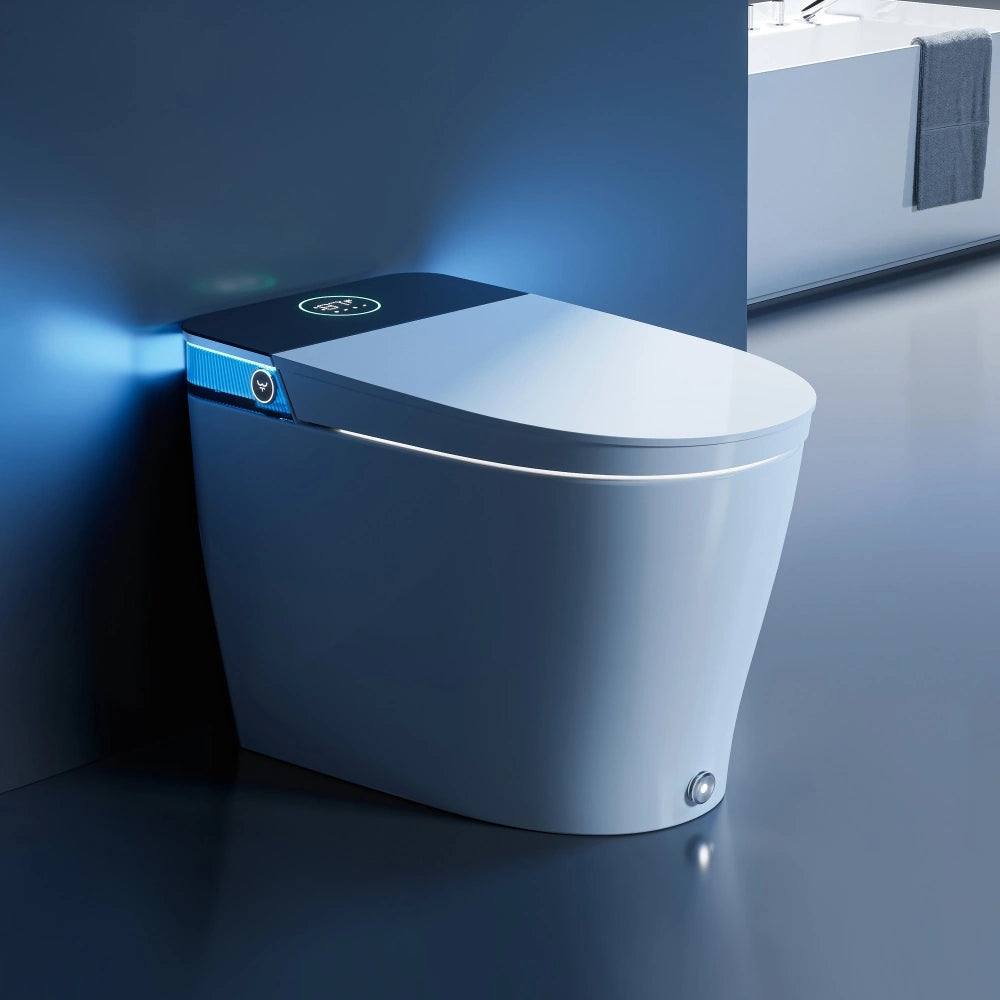
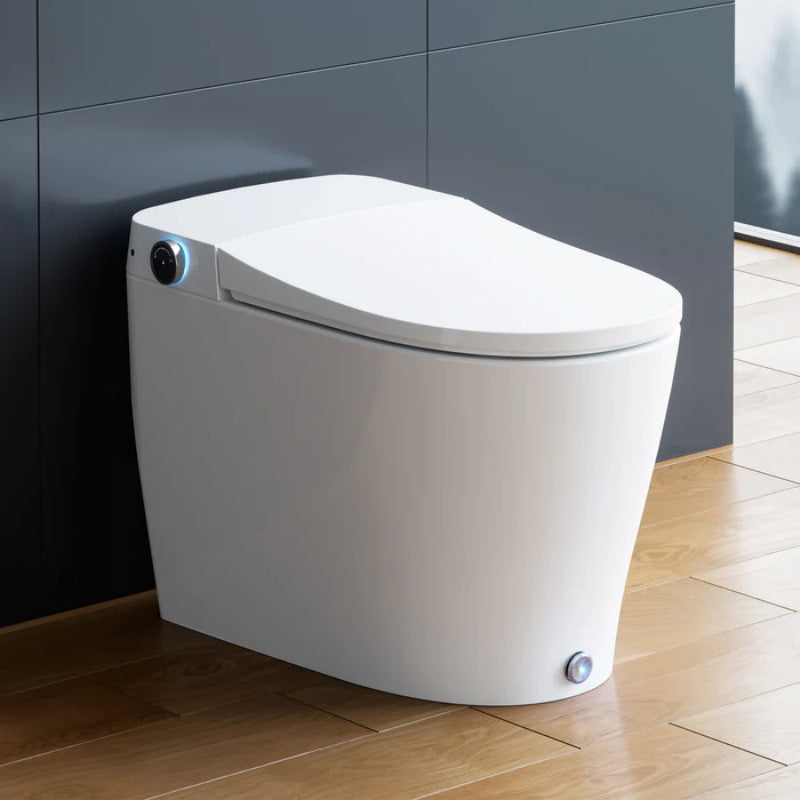
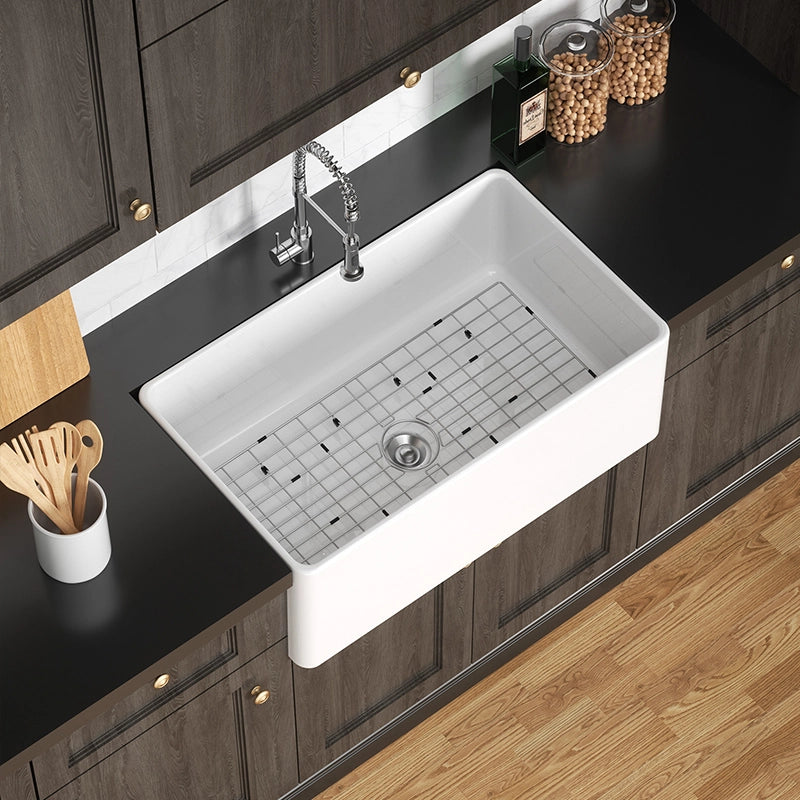
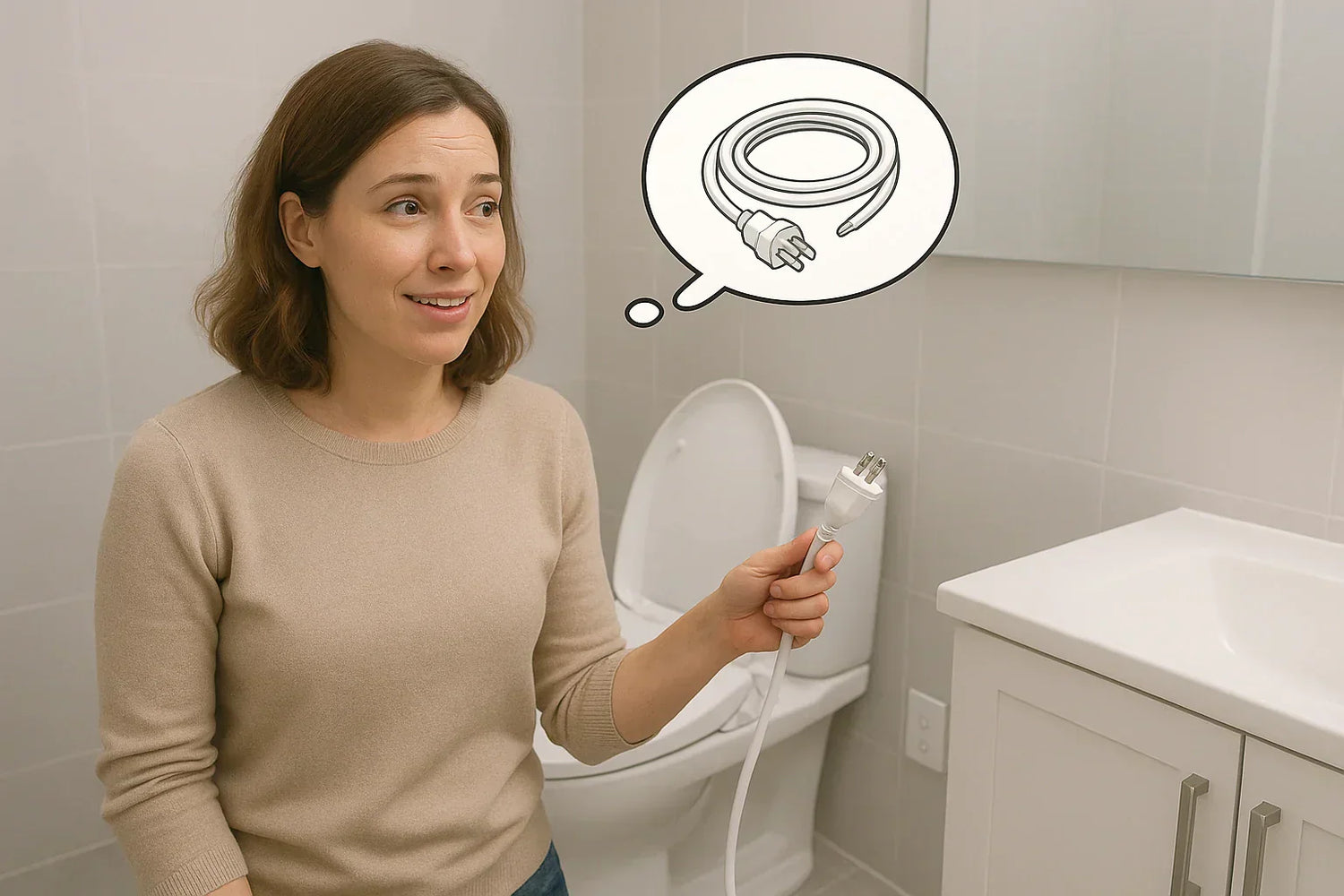

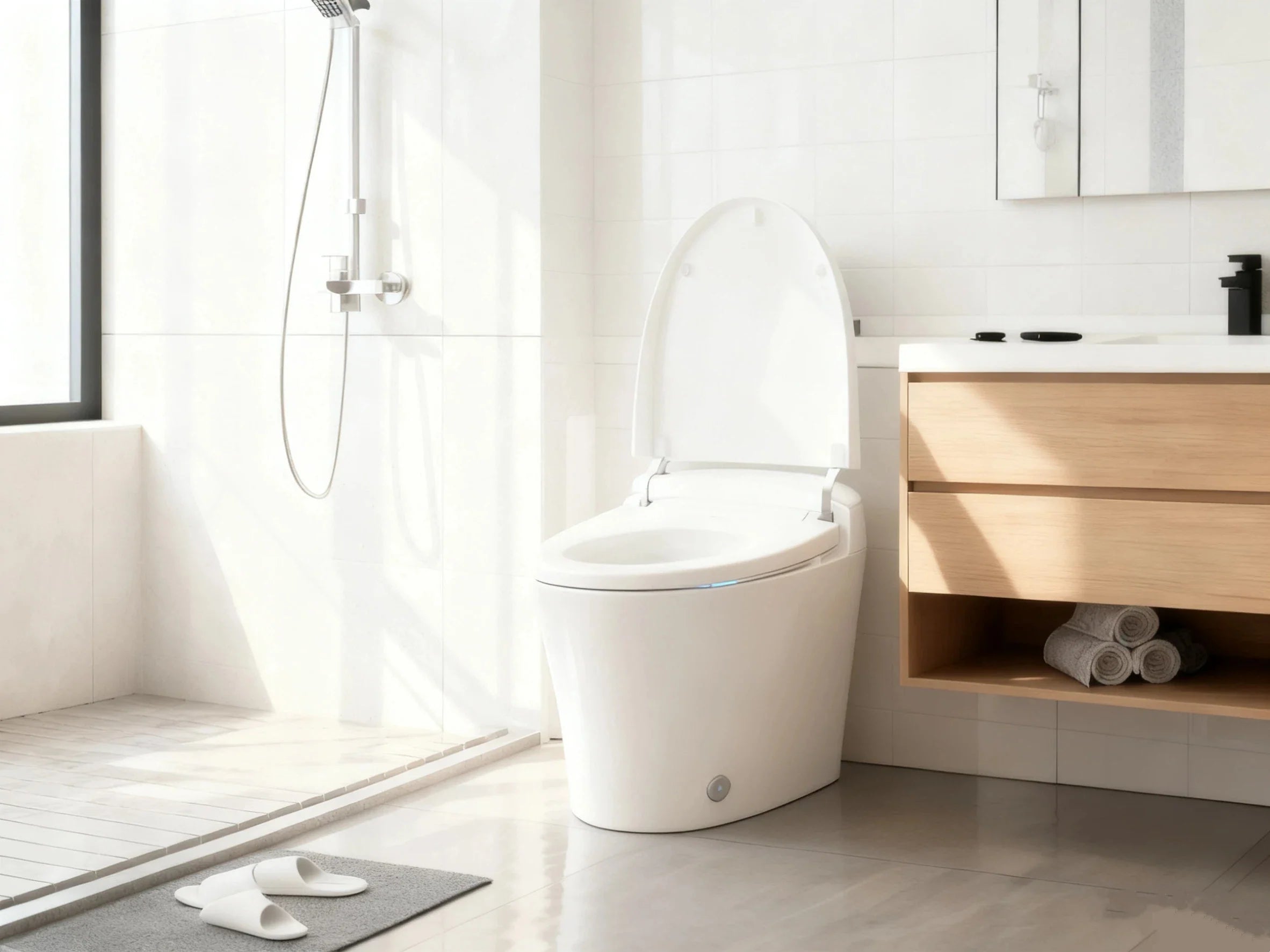

Leave a comment
This site is protected by hCaptcha and the hCaptcha Privacy Policy and Terms of Service apply.